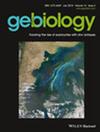Bioturbation Shapes Marine Biogeochemical Cycling Following the End-Permian Mass Extinction in Northern Pangea
Abstract
During the end-Permian mass extinction, a global decline in seafloor sediment mixing and burrowing (bioturbation) provides critical evidence for the collapse of marine ecosystems, likely triggered by rapid ocean warming and deoxygenation. However, the decline and subsequent recovery of bioturbation after the extinction event may not only have been a symptom of environmental change but also a driver, influencing nutrient exchange and reductant burial across the sediment–water interface and thus water column oxygen availability and seafloor habitability more broadly. Here we test this hypothesis through combined analyses of bioturbation and sedimentary geochemistry, focusing on marine siliciclastic records of the Permian–Triassic transition from Svalbard. We find that total organic carbon, total sulfur, and organic phosphorus decrease with increasing bioturbation intensity, whereas inorganic reactive phosphorus phases (authigenic and iron oxide-bound phosphorus) increase. These differences are most strongly associated with biodiffusion (particle mixing) rather than bioirrigation (solute exchange). Our findings suggest that bioturbation primarily influenced sediment chemistry by enhancing organic matter oxidation, in contrast to some modern settings where downward mixing may promote organic matter preservation within the anoxic portion of seafloor sediments. The early return of shallow-tier bioturbators in this region < 200 kyr after the extinction event likely promoted a rapid restoration of efficient carbon and sulfur cycling within benthic ecosystems. In contrast, efficient phosphorus burial via sink-switching may not have resumed until deeper-tier bioturbators achieved pre-extinction levels of sediment mixing > 1 Myr after the mass extinction.

 求助内容:
求助内容: 应助结果提醒方式:
应助结果提醒方式:


